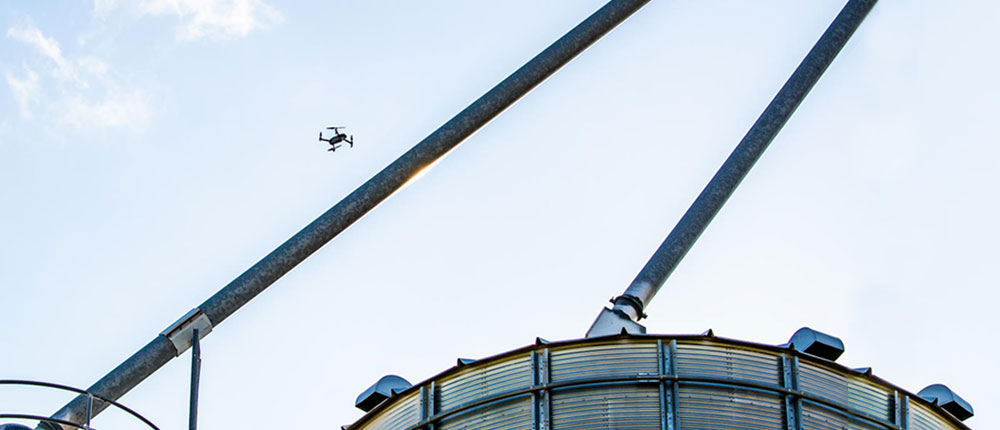If you could avoid climbing 130 feet to check on grain condition inside a silo or bin, would you? For safety experts, the answer is a clear yes. That’s exactly how drones — officially unmanned aircraft systems (UAS) — and other digital technologies are being used at CHS facilities from Savage, Minn., to Myrtle Grove, La.
“Drone-captured videos have given us insights into potential problem areas we couldn’t see from a cherry picker and with much less cost and risk,” says Heidi St. Clair, director of supply chain automation, CHS.
From inspecting grain to flying over bins to check grain-handling equipment, drones help keep people on the ground and away from potentially unsafe conditions.
“This technology is a game-changer when it comes to safety,” says St. Clair. “It’s much safer to fly a drone with an infrared camera to the top of a silo to check for grain hotspots than it is to send employees above ground.”
CHS grain terminals already rely on other virtual observation methods, such as hazard-monitoring devices and video monitoring. “We’re adding more sensors, monitors and robotics to capture data and images we’ll use to give teams specific information and enhance safety,” says Kevin Hall, vice president, CHS Global Grain & Processing, supply chain and continuous improvement.
In addition to safety enhancements, live video feeds collect real-time information. For example, 35 recently installed cameras at the Myrtle Grove grain export terminal offer a bird’s-eye view of critical work zones across the 30-acre site. “That gives us real-time tracking and visibility of the terminal around the world,” says Hall. “Combining visual indicators with data helps us make better decisions across the CHS digital supply chain.”




